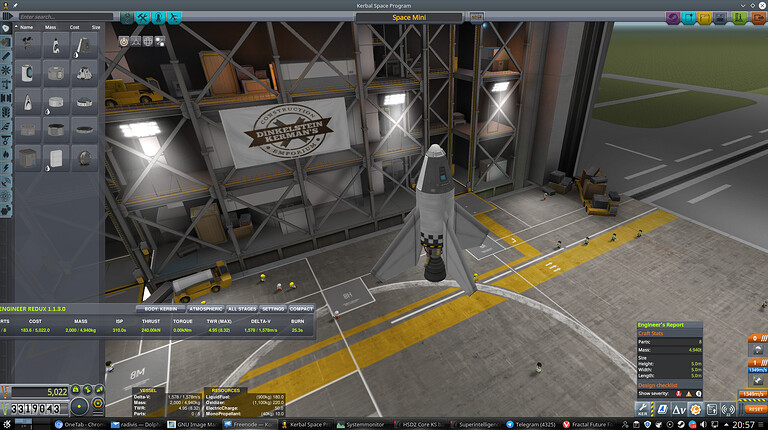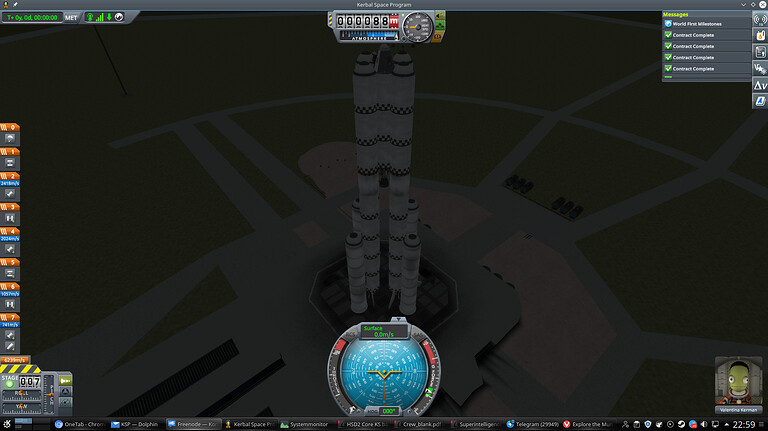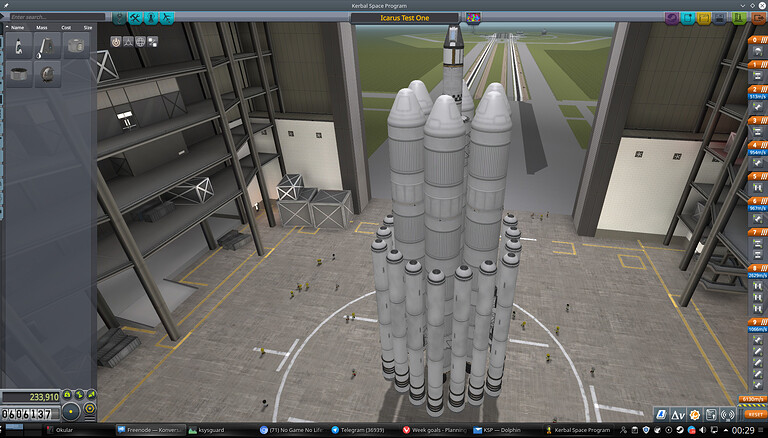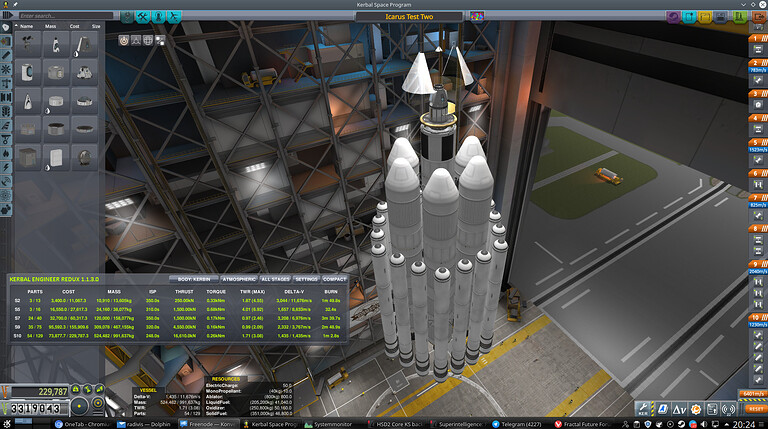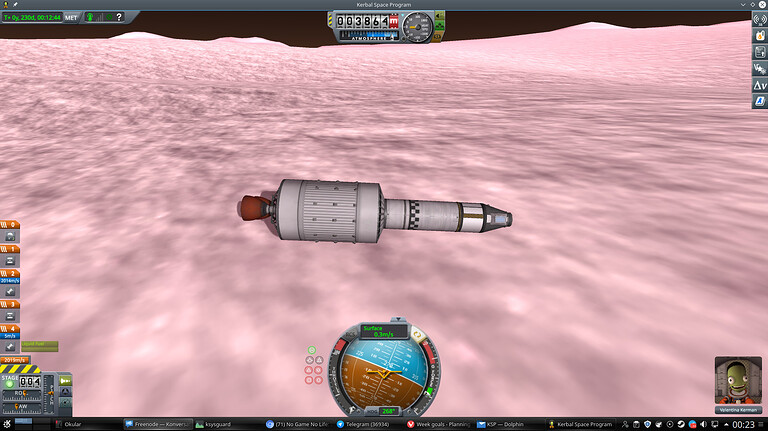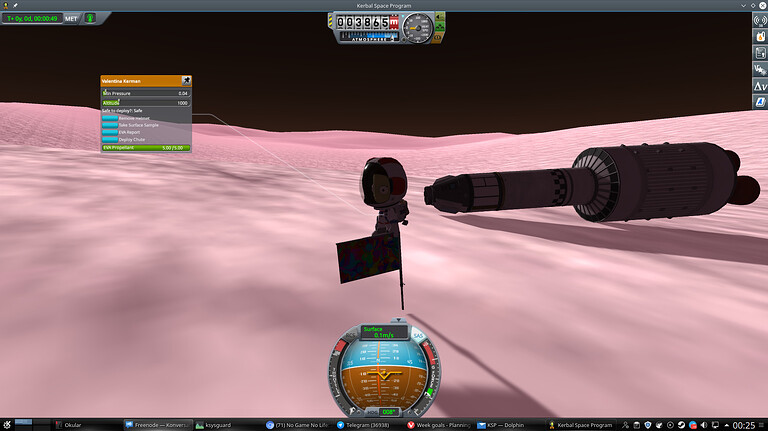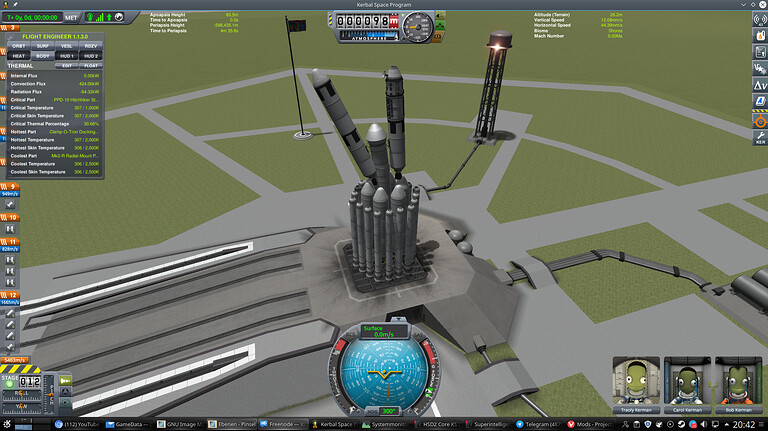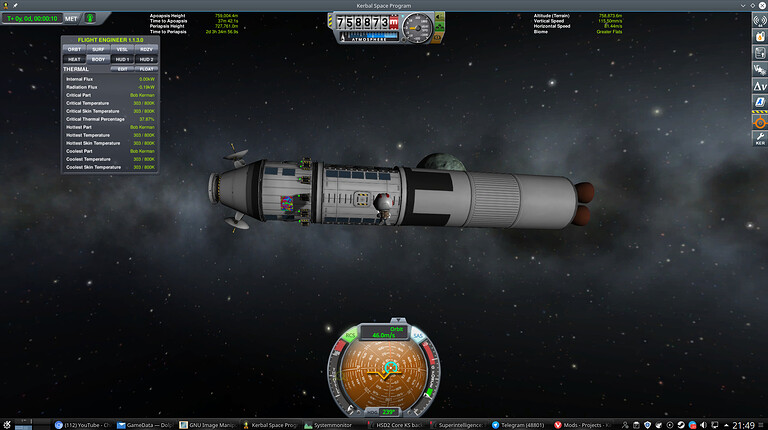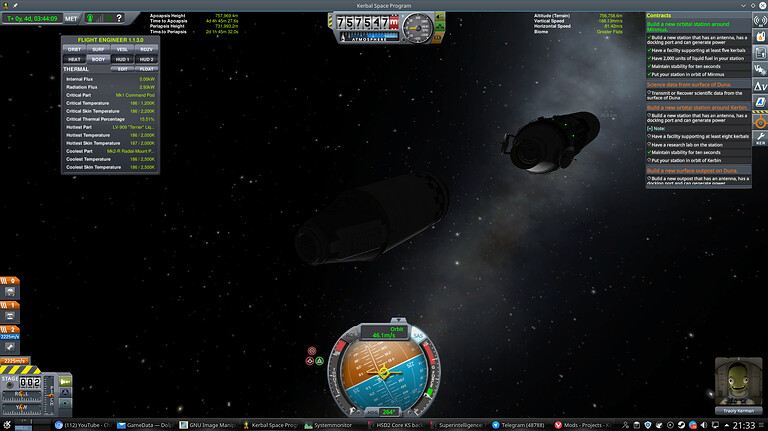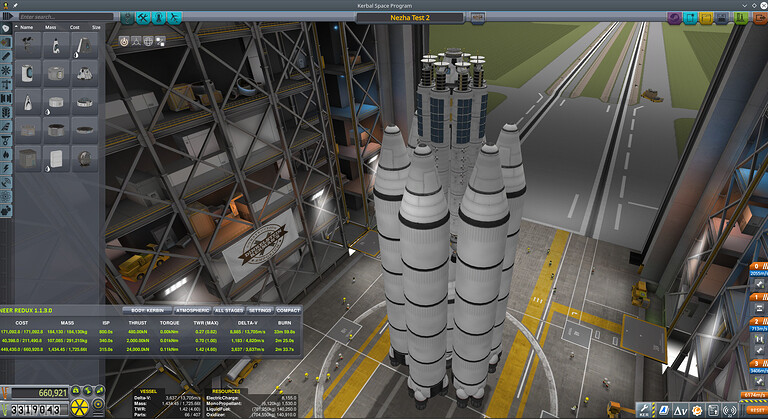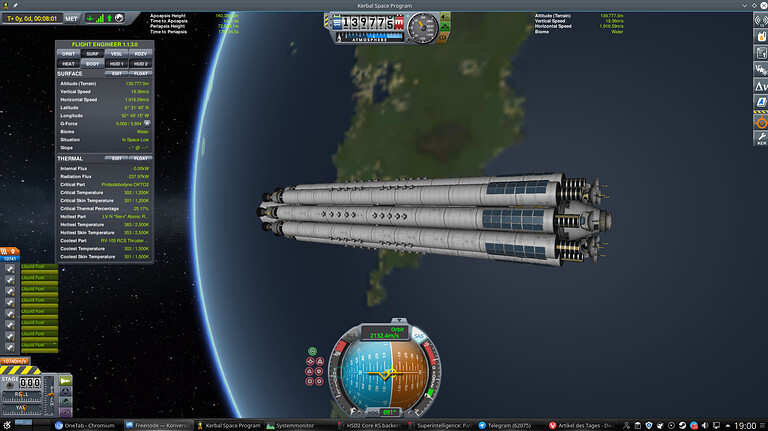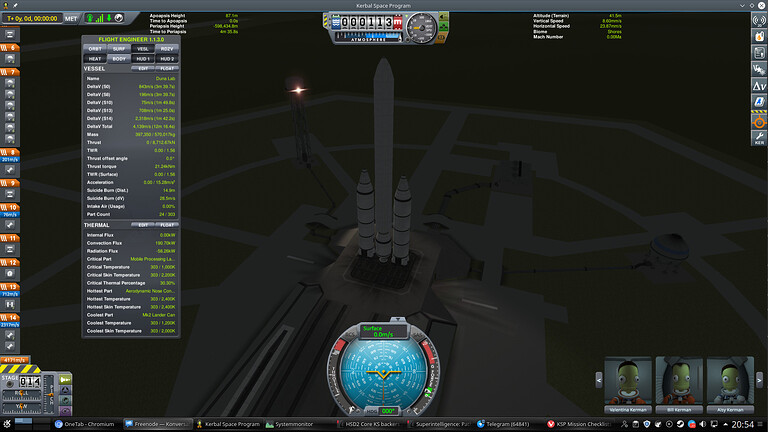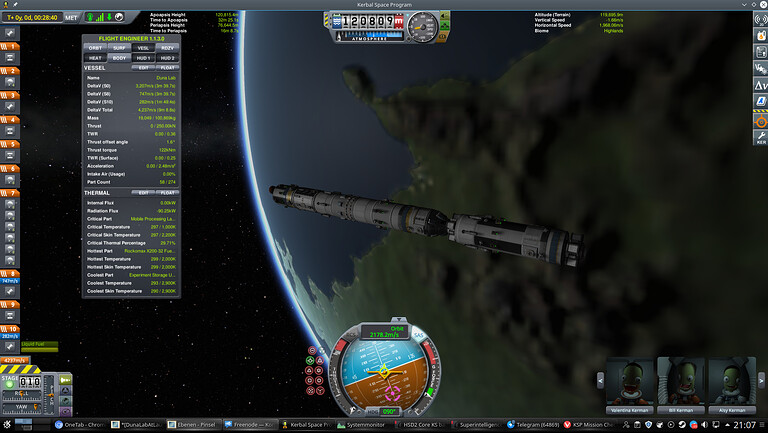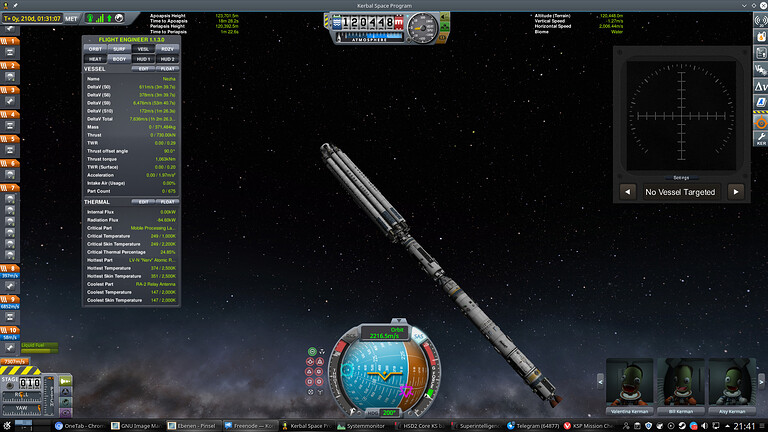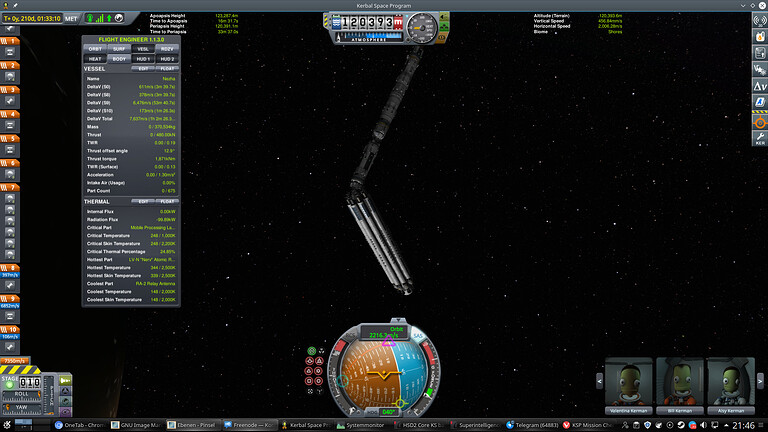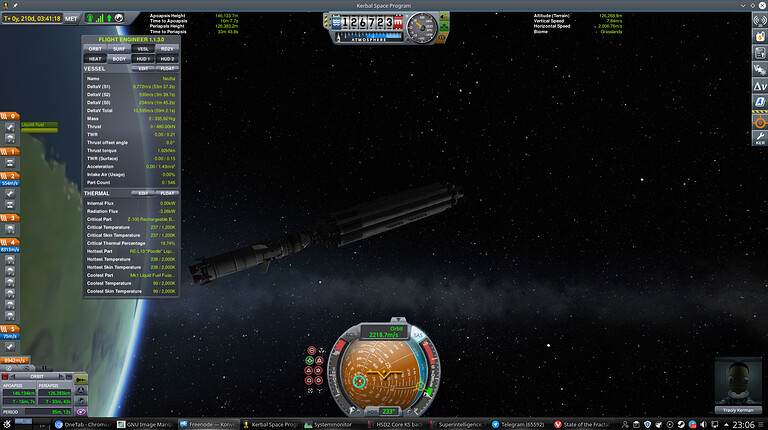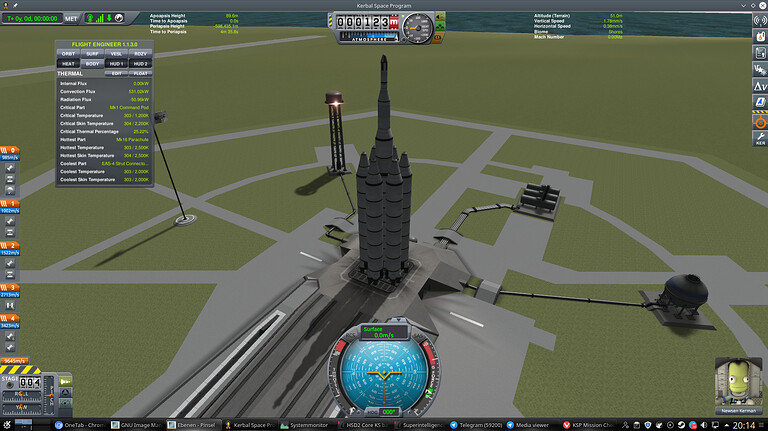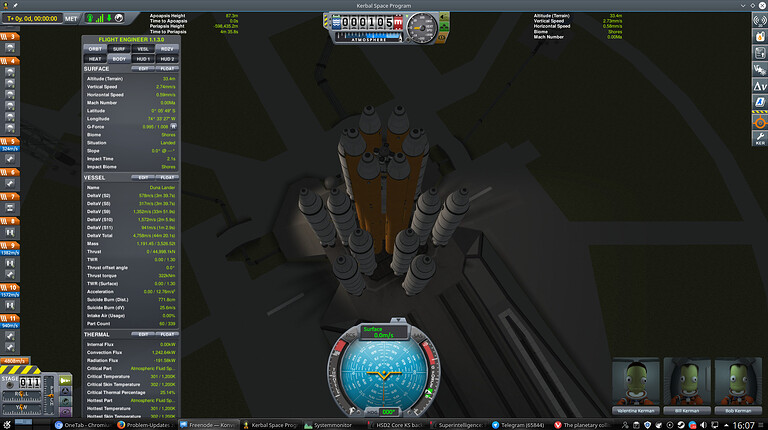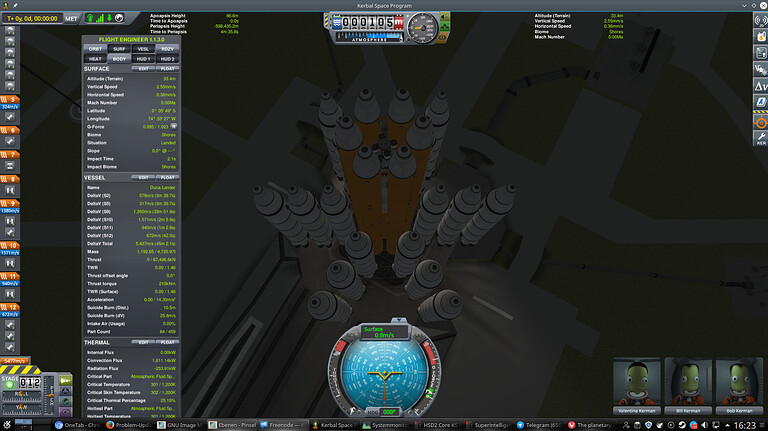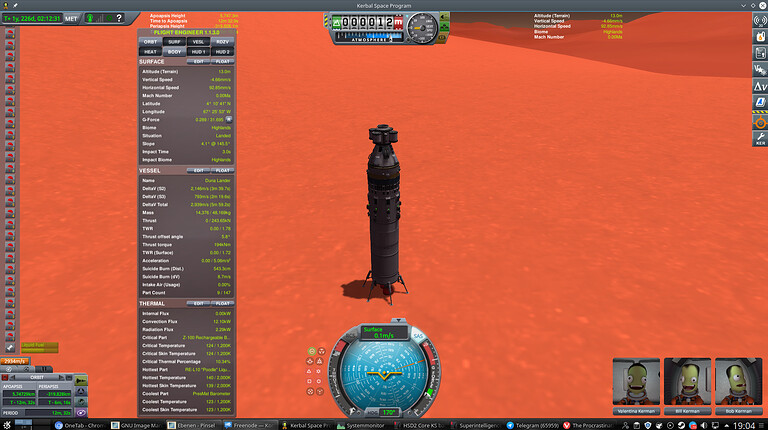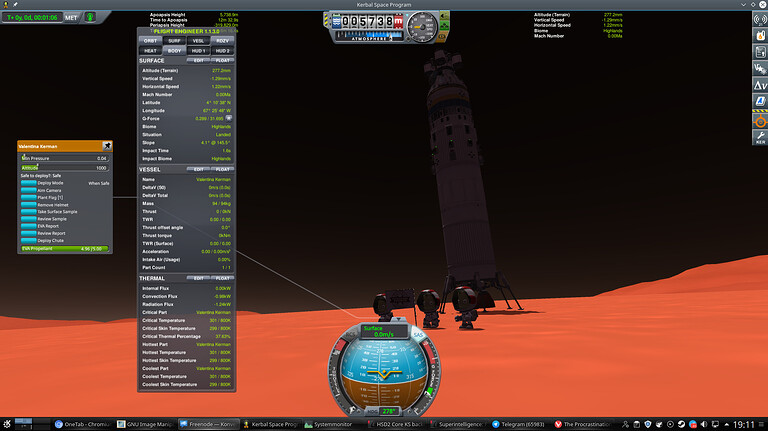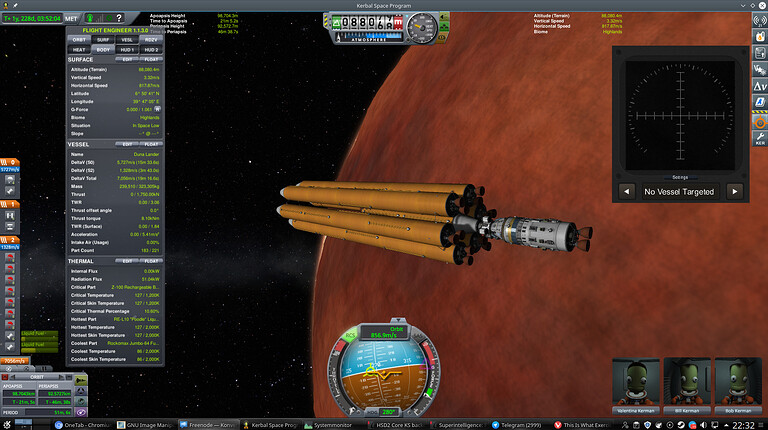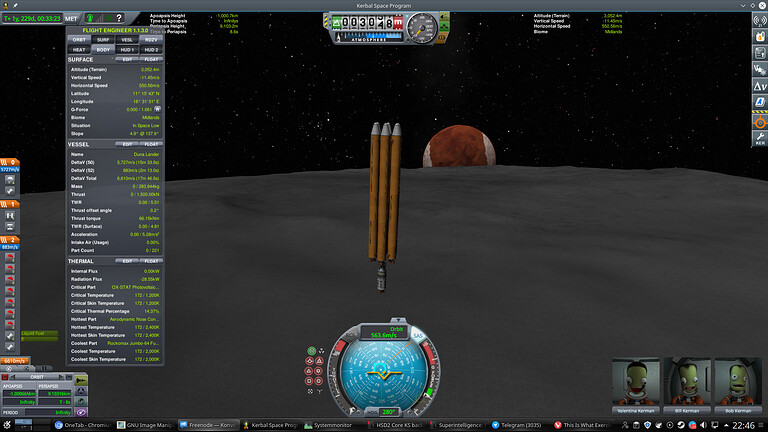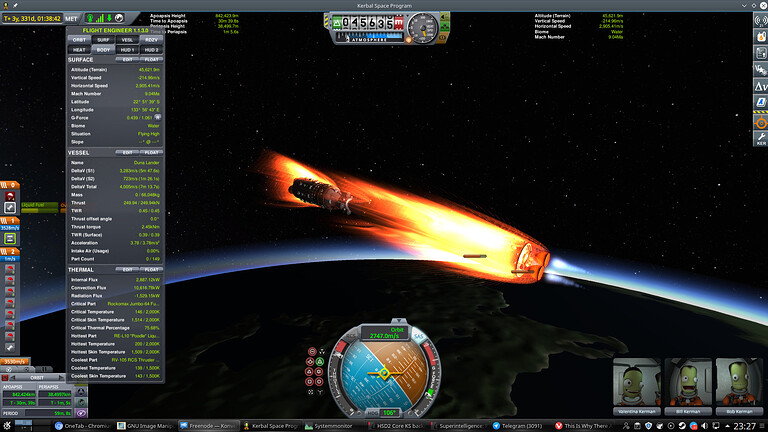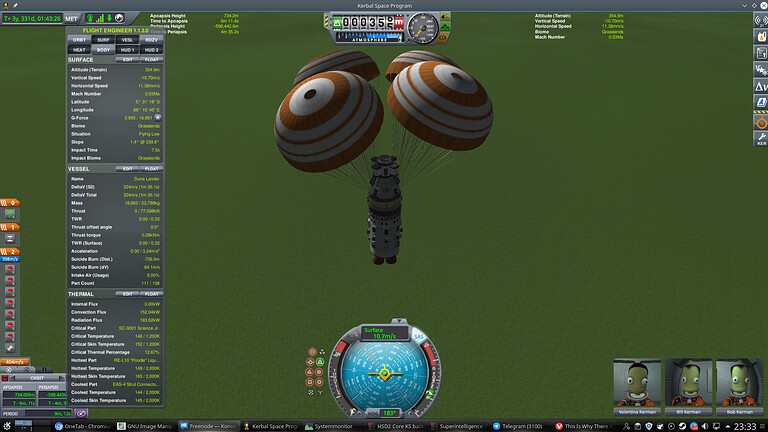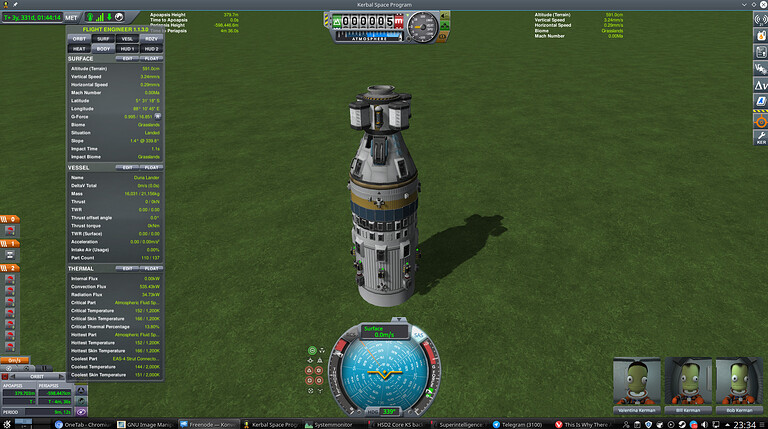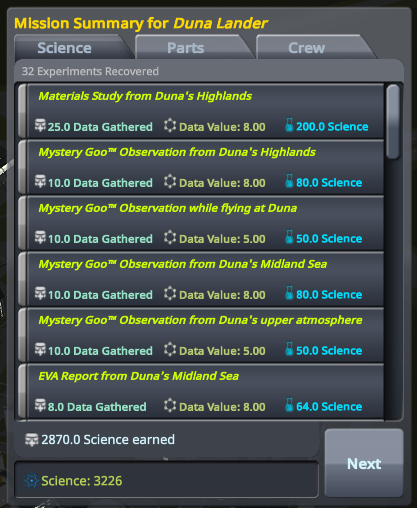Part 1: Humble Beginnings
Kerbal Space Program is a game that allows you to build rather realistic rockets and do all kinds of space missions with them. The fun part of that is that so many things can go really wrong. And fixing all of them creates a rather interesting learning curve – and quite the feeling of accomplishment after a successful mission.
It took me about a month of watching people play the game on YouTube until I was motivated enough to try it out on my own. And it was worth it! A slightly humorous approach may explain why:
Also, building huge rockets and see them land on distant worlds, or explode catastrophically is really worth it!
As reasonable player I started the game with the tutorial. Which is where you can get many things wrong, but you can easily get them right, if you are paying sufficient attention. Afterwards I started the game properly in career mode. Meaning that I started out with almost no tech, cheap buildings with huge restrictions, and almost no money. I had to get money with randomly generated missions by contractors. Those could range from testing new experimental parts, over rescuing stranded astronauts from low orbit, to planting a flag (or whole base) on the Mun, the big moon of the home worlds of the Kerbals: Kerbin.
Getting into orbit
The first big challenge of every mission is getting a rocket into orbit. Don’t confuse that with getting into space (in this game above 70 km over sea level). Getting into space is rather easy in KSP. But without substantial additional effort your rocket will be likely to fall back down.
A tiny rocket like this will get you into space above Kerbin, but not much more. Also, it won’t get you back, because when falling down again, it will do so nose down first.
For an explanation why getting into orbit is rather hard, also see: Orbital Speed
Thankfully, the KSP tutorial does an ok job at explaining how to get a rocket into orbit. But for some reasons achieving orbit in the real game seems to be much harder. Probably due to the very serious restrictions on the size and complexity of rockets you can build at first.
It can take about an hour until you are able to get a rocket into orbit kinda reliably. Don’t get me wrong. Many rockets will still fail catastrophically, but sometimes you will succeed and get one into orbit.
Getting to the mun
After getting into orbit the next big challenge is getting something to the Mun. A rocket like the following can theoretically get the job done:
This is one of the more promising designs you can do with a quite low tech level. Unfortunately, it’s still crap. For many reasons:
- When the four side boosters detach they tend to collide with each other, or more problematically with the main engine in the middle.
- The main engine at the bottom is way too weak. It can hardly accelerate the tower of fuel above it.
- The eight tail fins make it rather stable, but make it very hard to steer while still being in the atmosphere!
Still, a rocket like that is good enough to get to the Mun, even to enter a nice orbit around it, and return safely to Kerbin.
If you want a bit more, you need a monster like this:
Theoretically this top heavy catastrophe bound to happen could land on the Mun and get back to Kerbin. If it had proper landing head, that is. But that’s a minor detail.
I don’t have sceenshots of my first Mun landings. Still, Mun landings aren’t too extremely difficult, since they are still covered by the tutorial.
Setting sight for Duna
After landing a couple of times on the Mun and Minmus, the second moon of Kerbin, I have collected enough science points to unlock the technology for building medium sized rockets. At first I really thought that a rocket like this was just sheer insanity:
But then I had really gone wild with my aspirations. I present to you the result of my hybris:
As you can see, I called this abomination the Icarus Test One. I called it Icarus, because it supposedly had enough power to fly into the sun. Test, because I wanted to see what a design like this could do. Well, one thing it could do easily, was to explode during ascent. Since all the 18 solid stage boosters are detached simultaneously, it’s really hard not to get them to hit the middle tanks or engines while falling or exploding. Especially since at that time I didn’t understand how strut connectors or any other kind of mechanical structural supports worked. So, the whole thing wobbled precariously while its boosters were firing.
Still, that didn’t stop me from trying to see how far such a rocket could get. Thus, I set out to get it to Duna, the planet most similar to Mars. So, it added a science return module and build the Icarus Test Two:
It even got a fancy faring that could be detached in space! Even better: the crew capsule had a docking port. But the engineers didn’t notice that they assembled it upside down! Well, thankfully never actually tried to use it anyway.
I was actually very proud at this stage that I figured out how to get my experimental equipment back to Kerbin safely, after it has been to the Mun. The small science module just below the crew capsule usually exploded under the heat of reentry to Kerbin - even when a small heat shield was attached just below it! Attaching a larger head shield under it fixed that issue for good!
The Icarus Test Two Mission
This was of course a very experimental mission. A proof of concept, so to speak. That’s why the ship was called the “Icarus Test Two”. I never intended it to do a serious mission to Duna. My plan was to try flying there and then load the last saving point to see how I could improve the rocket.
That’s why I deemed to safe to send such an ill equipped experimental rocket to Duna. Heck, it didn’t even have any proper landing gear!
It still amazes me that back then with the limited understanding of the game, I managed to arrive at Duna…
Well, of course such an undignified landing was nearly inevitable due to the lack of landing gear. Also note that I landed in the northern polar region, which is really huge in Duna. The white of the ice mices nicely with the rust red of the soil to produce a joyful light pink. Time to plant a flag to spite the odds!
Valentina Kerman was so high on having survive that tripped that she climbed on the trippy flag.
The miracle of return
I quickly found out that landing on Duna provided lots of science points… given that I could get my stuff back to Kerbin in one piece. Having crash landed on Duna I figured out that I could try – just for fun – whether it’s possible to start a rocket from a horizontal position. After more than a dozen attempts I found out that it’s actually possible, although extremely hard. It requires an ungodly amount of luck.
With that brute forced luck I found myself back in Duna orbit and planned my way home. Leaving the gravity well of Duna wasn’t too hard, since it’s much less massive that that or Kerbin. The interplanetary travel from Duna to Kerbin was what too most of my remaining fuel. I actually managed to get back to the vicinity of Kerbin, but my fuel didn’t suffice to enter into an orbit of Kerbin. In other words, from my trip from Duna I had entered the gravity well of Kerbin so fast that I was just passing through.
The Kerbin escape orbit rescue mission
Having come so far, I wasn’t willing to admit defeat and to revert back to the start of the mission. Instead, I planned a rescue mission with a rocket that was planned to intercept what was left of the Icarus Test Two rocket. Given that it traveled at interplanetary speeds, that was a serious challenge!
After a couple of really crazy interception maneuvers I actually managed to approach the craft. The problem is that I forgot to add a docking port to my rescue rocket, so Valentina Kerman had to exit her crew capsule in her EVA suit and fly to the rescue rocket on her own. The whole scientific equipment with all the valuable data about Duna was lost.
In fact, I tried launching a second even crazier rescue mission to save the science equipment, but somehow I just managed to find burnt out rocket stages, rather than the science gear.
I was really proud about that rescue mission. However, I had licked blood and wanted to get science from Duna. My next months of playing KSP would revolve around getting back to the red planet. But this time, much better planned and prepared.
… to be continued …
